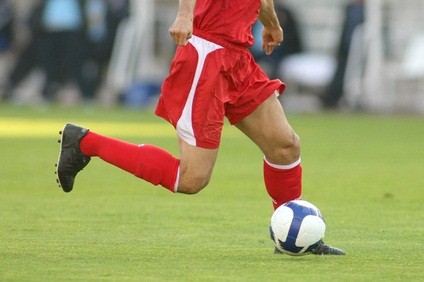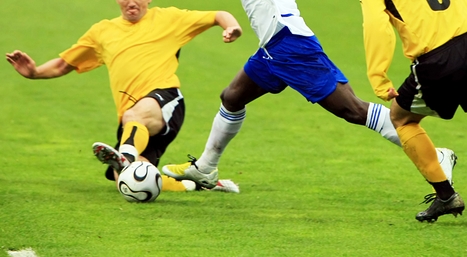Tennis Elbow Symptoms
If you are experiencing constant pain every time you extend your wrist or squeeze something, you could be displaying symptoms of tennis elbow. Severe discomfort from everyday activities whether it be lifting a jug of milk or a cup of coffee, is cause for concern. Seek medical attention as soon as the pain starts so that a treatment plan can be established to avoid permanent damage. There is usually a 3-4 month treatment and recovery process for tennis elbow, however if left untreated, it can lead to chronic pain.
Diagnosing Tennis Elbow
The medical term for tennis elbow is lateral epicondylitis. It can either be a simple inflammation of two tendons in the elbow (known as a type of tendonitis) or an actual tear within the tendon. Tennis elbow affects the outer part of the elbow. As elbows are complex joint systems that we use daily, tennis elbow is quite common; reportedly affecting 1 to 3 percent of adults in the U.S. each year. Typically people experience tennis elbow in their dominant arm. Therefore in most cases, the right elbow is more likely to be affected than the left elbow is.
A majority of patients struggling with this kind of injury range in age from 30-50 years old. You do not have to be a tennis player to get tennis elbow as it is typically caused by overuse or some type of trauma. Activities not related to sports, like painting, using a computer mouse, food preparation and even plumbing can spur it. However, it may occur to tennis players if they have poor technique, or use a cracked racquet frame, a racquet that is too stiff with excessive power, or even over do the backhand.
Repetitive use as outlined above strains the two tendons that extend the wrist (extensor Carpi radialis brevis ECRB and the extensor carpi radialis longus ECRL). Where these two tendons attach to the bone at the elbow, there is a poor blood supply. This limited blood supply makes it very difficult for the body to heal or resolve the tendinitis once it occurs. It also makes the condition more likely to occur repetitively.
Tennis Elbow Treatment
Treatment can very patient to patient and include stretching, use of an elbow band, anti-inflammatory medication, a cortisone injection, and possible even surgery.
Stretching
The first line of treatment for tennis elbow involves a series of stretches. The stretches include the pronator muscle and tendons (ECRB and ECRL). In order to prevent tennis elbow and relieve painful symptoms, these stretches should be performed at least 3 times per day. Be sure to check out my video on YouTube for exercises you can try.
Elbow Band
The use of a tennis elbow band is also a very important part of treatment. While any brand of band will work, it should not be a sleeve that goes around the elbow, but a band. The band should be worn 24 hours a day, seven days a week for a total of six weeks. It can be taken off for personal care such as showering. The band functions to change the origin site of the two tendons allowing the inflammation to resolve.
Anti-Inflammatory Medication
Some people will benefit from the use of an anti-inflammatory medication. Consultation with your healthcare provider is necessary before taking any medication. To reach a Kentucky orthopedic, feel free to contact Dr. Grossfeld at Orthopaedic Specialists at 502-212-2663
Cortisone Injection
On occasion a cortisone injection may be given to the area of the inflammation. Cortisone is a super strong anti-inflammatory medication that helps to reduce the inflammation. However, there are several issues with cortisone injections given from the condition of tennis elbow. The first issue is that it gives immediate relief. This may allow the person to get back to the sport too quickly and cause the condition to immediately return. Because the injection is given very close to the skin, and not in a joint, it may also cause a whitening of the skin called Vitiligo. The skin may become very white and loss of fat may occur causing the area to look very odd. Typically the skin will return back to its normal color within 12 months and the fat will re-populate during that same time frame as well..
Additionally, there are several experimental forms of treatment that are also available ranging from PRP (platelet rich plasma) injections to Prolotherapy which may help to reduce the symptoms.
Surgery
If all fails, then an MRI scan is recommended. An MRI will help to identify if there is any tearing within the tendons or if the tendon has completely torn off the bone. In these cases surgery is recommended. The surgical procedure is outpatient and takes about 30 minutes to preform. It involves inspecting the unhealthy and torn tendon and then re-attaching it to the lateral epicondyle. However, it’s worth noting that less than 6 percent of patients being treated for tennis elbow need any surgical intervention.
For more information on tennis elbow, check out our blogs below!
The Mayo Clinic Studies the Epidemiology of Tennis Elbow
11 Facts About Tennis Elbow from Louisville Sports Medicine Specialist
Kentucky Orthopedic Explains Tennis Elbow aka Lateral Epicondylitis


 A hot topic in ACL research involves which is a more superior operation: double bundle ACL reconstructions versus the single bundle ACL. In the April 2014 Journal of Bone and Joint Surgery Drs. Starman et al. reported on this topic in the "What's New in Sports Medicine" section of the journal. They stated that there is no current evidence to support one procedure over the other.
A hot topic in ACL research involves which is a more superior operation: double bundle ACL reconstructions versus the single bundle ACL. In the April 2014 Journal of Bone and Joint Surgery Drs. Starman et al. reported on this topic in the "What's New in Sports Medicine" section of the journal. They stated that there is no current evidence to support one procedure over the other.
